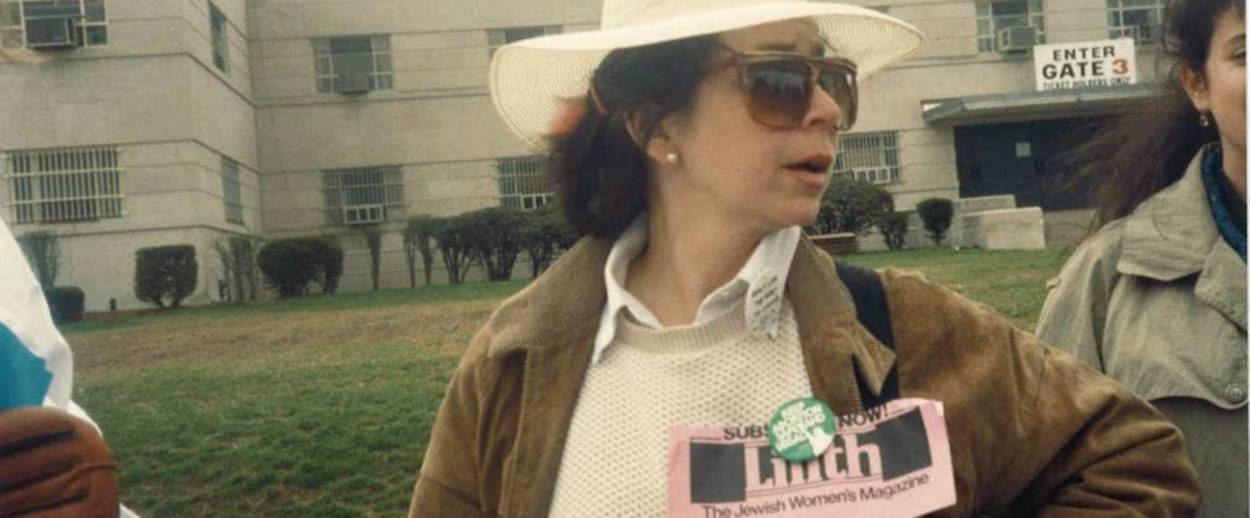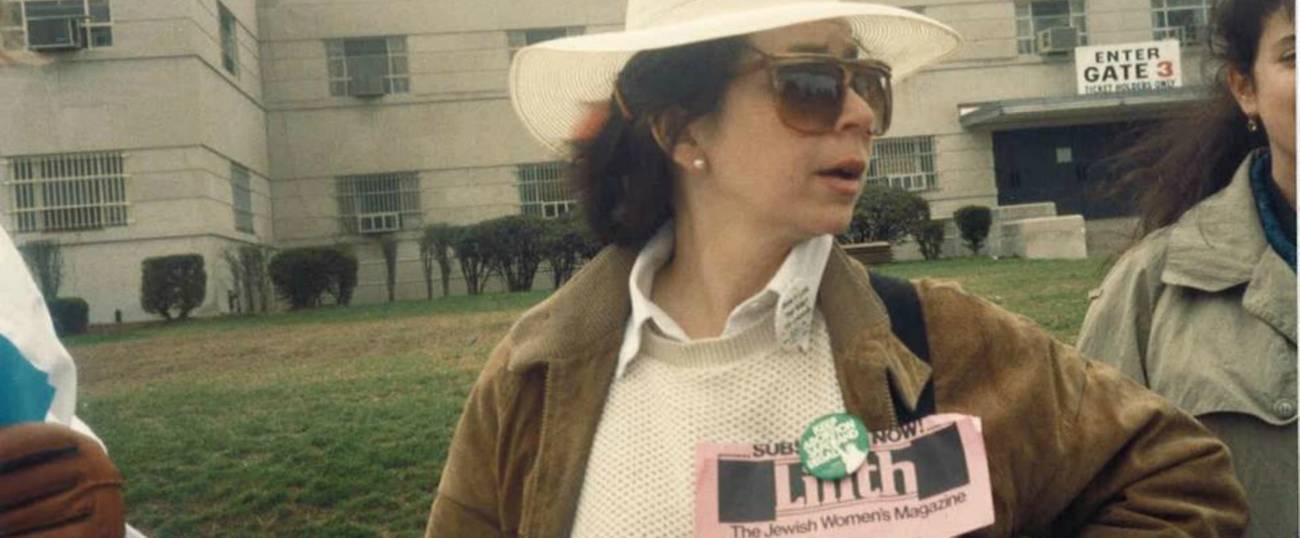A Love Letter to ‘Lilith’
The Jewish feminist magazine’s archive has found a permanent home at Brandeis University




I grew up with Lilith magazine. My mom—the woman who sewed an Equal Right Amendment patch onto my Little League cap when I was nine—had a subscription. I often leafed through the issues on the coffee table, imagining one day I’d become an “independent, Jewish & frankly feminist” myself.
I recall a brutally simple and powerful 1981 cover depicting two coat hangers, roughly twisted into a Jewish star shape, against a pale blue background. Inside was a reported story about how the right-to-life movement threatened Jewish women’s rights. I was a kid, but this was history and politics I needed to know, and presenting it through a lens of activism was the right way for me to learn. Activism helps people feel less hopeless and alone.
The magazine’s very title reclaimed a figure representing women’s insubordination and isolation and turned her into one of freedom and power. The magazine was named after the Lilith of Jewish mythology, a character mentioned in the Dead Sea Scrolls and described in later texts. She was supposedly Adam’s first wife, his equal, created from dust like him, but she was banished from the Garden of Eden for refusing to lie beneath him. Adam wound up getting a more subservient helpmeet, fashioned from his rib, and Lilith wound up getting depicted as both a baby-stealing monster and a seductive succubus. The magazine made her an icon.
When I got to college, Lilith was tangling with some of the issues that mattered to me, issues no one else seemed to be talking about. At the time, Jewish-American Princess jokes were everywhere, but only Lilith refrained from shrugging “they’re just jokes,” or telling those of us who were irked to “lighten up.” Instead, Lilith drew the connections between these stereotypes and old-school misogyny, anti-Semitism, and Jewish self-hatred.
Lilith was born in 1976, and since then has run a huge variety of stories. It’s the first place I read about a lesbian Jewish wedding. It ran tons of stories about food, family, and body image, but also about poverty in Jewish communities around the world, Deaf Jewish women activists, Jewish women’s eggs as a hot commodity on the IVF market, the sexy vintage Jewishness of Betty Boop, raising children with autism, why Jewish women might be more at risk for bipolar disorder, growing up as a red diaper baby, pondering Beyonce. I saved 2011’s “The Swimsuit Issue” which featured a gorgeous black and white vintage photo on the cover and a piece about Viennese Jewish female swimmers who boycotted the 1936 Berlin Olympics. (Take that, Sports Illustrated.) Lilith was the first place I read about trans scholar Joy Ladin, (and she got to tell her own story rather than being its subject, and she made a beautiful cover girl, no less). I recall an issue with the giant word BOOBS! on the cover (ooh!), with stories about breast reduction surgery, the Venus of Willendorf, and minimizer bras. There was a piece by a Muslim feminist reclaiming the Torah’s Hagar.
The magazine’s contributors have been a who’s who of powerhouse Jewish women: Grace Paley, Judy Chicago, Maira Kalman, Allegra Goodman, Roz Chast, Dara Horn, Leela Corman, Marge Piercy (who was the magazine’s poetry editor), Liana Finck, Leslea Newman, Miriam Schapiro, Yona Zeldis McDonough, Nicole Hollander. Cynthia Ozick.
But the problem with paper magazines is that they’re ephemeral, and not all the back issues are online. Lilith has been lucky in that it’s spent 36 years in the same office building, which meant that files weren’t purged in various moves, but over time, even an intact treasure trove of paper runs the risk of being destroyed. Fortunately, Brandeis University—the alma mater of Susan Weidman Schneider, the magazine’s Editor-in-Chief—has acquired Lilith’s 40 cubic feet of boxes and over 800 files of stories. Now, the country’s first and only independent Jewish feminist non-profit magazine will have a permanent home at the Robert D. Farber University Archives and Special Collections, and be accessible to scholars and activists of the future.
Lilith isn’t perfect. Sometimes its tone is stilted and stuffy, sometimes it tries too hard to be cool, and occasionally it falls for the same clickbait-y hoaxes the rest of the media does. (“Rainbow parties,” I’m talking to you.) But it’s still essential. Novelist Nessa Rapaport, a frequent contributor, told me, “Lilith is the rarest brew of intelligence, courage, and verve. Even in the digital age, I read every issue cover to cover as soon as it arrives, amazed that the intrepid editors and writers still find so much that is important, outrageous, beautiful, and sometimes hilarious. It is emphatically not your mother’s magazine—even if your mother is delighted to read it.”
Hey, I’m a mother now. Nessa’s right.
Marjorie Ingall is a former columnist for Tablet, the author of Mamaleh Knows Best, and a frequent contributor to the New York Times Book Review.